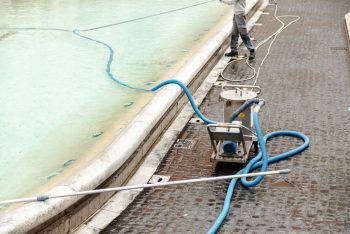
Ice on your air conditioning unit is far from a cool situation. It can lead to reduced efficiency, poor cooling performance, and potentially damaging the AC unit. This article will guide you through an in-depth understanding of how to check for ice on your AC unit, why ice forms, and what steps you can take if you find ice on your AC unit.
To check for ice on an AC unit, first turn off the unit for safety. Then, inspect the exterior of the unit, the refrigerant lines, and the evaporator coils for visible ice. Also, check the air filter and the evaporator drain line as a dirty filter or a clogged drain line can cause ice formation. Lastly, inspect the blower fan as a malfunctioning fan can lead to restricted airflow and ice buildup. If you find ice, turn off the AC unit and allow the ice to melt, which could take up to 24 hours.
Signs of Ice Build-Up
Before you can check for ice, it’s essential to know the signs of ice build-up on an AC unit. These include reduced cooling performance, weak or no airflow, short cycling, and visible ice on the unit. If you encounter any of these symptoms, it’s essential to address the issue as soon as possible to prevent long-term damage to your AC unit.
Inspecting Your AC Unit for Ice
To safely inspect your AC unit for ice, here are the steps you need to follow:
- Turn off the AC unit: Safety first! Always turn off the AC unit to prevent any potential hazards or damage to the system.
- Check for visible ice: This includes the exterior of the unit, the refrigerant lines, and the evaporator coils.
- Inspect the air filter: A dirty or clogged air filter can restrict airflow and cause ice to form on the AC unit. Replace it if necessary.
- Check the evaporator drain line: A clogged drain line can cause water to back up and freeze on the AC unit. Inspect the drain line for clogs and clear them if needed.
- Inspect the blower fan: A malfunctioning blower fan can cause restricted airflow and ice buildup. Repair or replace it if necessary.
Why Does Ice Form on an AC Unit?
Ice forms on an AC unit primarily due to two main reasons: insufficient airflow and low refrigerant levels. When there is inadequate airflow over the evaporator coil, the coil’s temperature can drop below freezing, causing water vapor in the air to condense and freeze on the coil.
Risks Associated with Ice on an AC Unit
Ice on an AC unit can pose several risks. It can dramatically reduce the system’s efficiency, cause it to work much harder to cool your home, potentially damage the compressor, block airflow, and increase energy consumption.
How to Defrost Your AC Unit
- Turn off the AC unit: Shut off the unit immediately to prevent further damage.
- Allow the ice to melt: Give the ice time to melt, which could take up to 24 hours.
- Check the air filters: Replace or clean the filters as needed.
- Inspect the evaporator and condenser coils: Clean the coils if necessary, or call a professional if you’re not comfortable doing it yourself.
- Check for refrigerant leaks: If you suspect a leak, contact a professional to inspect the refrigerant charge and fix any leaks.
Preventing Ice Formation on Your AC Unit
To prevent ice from forming on your AC unit, you should ensure proper airflow, clean the evaporator and condenser coils, check refrigerant levels, inspect and maintain the blower fan, and schedule professional maintenance.
Remember, if you notice ice on your AC unit, it’s crucial to shut it off and allow it to defrost. If the issue persists, it’s best to consult with a professional HVAC technician to diagnose and repair the problem. With the right knowledge and preventive measures, you can keep your AC unit running smoothly and efficiently.
Frequently Asked Questions
How often should I check for ice on my AC unit?
It’s recommended to visually inspect your AC unit for ice build-up every few months, especially during the hot summer months when the unit is in heavy use. However, if you notice any signs of ice build-up such as reduced cooling performance or short cycling, you should check immediately.
How can I check the refrigerant level on my AC unit?
Checking the refrigerant level is a complex process that involves using specific tools and knowledge of the AC system. It’s best to leave this task to a professional HVAC technician. If you suspect your AC unit has a refrigerant leak, it’s advisable to contact a professional immediately.
Can I use a hair dryer or heater to defrost the ice on my AC unit faster?
While it may be tempting to speed up the defrosting process, it’s not recommended to use a hair dryer or heater. Rapidly defrosting the ice can cause a sudden change in temperature, which may potentially damage the AC unit. The safest way is to turn off the unit and let the ice melt naturally.
How often should I replace or clean my air filters?
The frequency of replacing or cleaning your air filters largely depends on the type of filter your AC unit uses. Generally, disposable filters should be replaced every 1-3 months, while washable filters should be cleaned once a month. However, if you live in a dusty environment or have pets, you may need to replace or clean them more frequently.
How often should I schedule professional maintenance for my AC unit?
Most HVAC professionals recommend scheduling a professional maintenance service for your AC unit at least once a year. Regular maintenance can help prevent issues like ice build-up, improve the system’s efficiency, and extend its lifespan.












